 The hope to which Germana bore witness for us is not only, or so much, a human feeling, passing good wishes, as, instead, a ‘person’. It is Christ: Christ the Hope; Christ yesterday, today and always. Christ the Hope was the programme of German; Christ the Hope is her legacy.
The hope to which Germana bore witness for us is not only, or so much, a human feeling, passing good wishes, as, instead, a ‘person’. It is Christ: Christ the Hope; Christ yesterday, today and always. Christ the Hope was the programme of German; Christ the Hope is her legacy.
But this message is not connected to an ideal or an abstract doctrine. Just as it was incarnated in a programme, so we see it again in a precise figure, in our image of her: a real, lively, impassioned, creative woman who animated with words and works; who was strong and tender, meek and decisive, aristocratic by blood but humble in spirit and in her approach, with everyone. And then to re-evoke her in her ‘passion’, in the stages of her long final ‘Via Crucis’ which was marked, once again, by hope and by the prayer that Christ himself repeated: “Father, let your will be done; Father into your hands I commend my spirit”.
This is not a hypothesis. The last time that I saw her, less than a month ago, while I was attempting to communicate with her, informing her that on that day I had received the book that was a translation into Malagasy of her biography of St. Camillus, Fr. Enos Fozzati put into my hand a note written by Germana. In red, by way of a caption, it said: ‘when I am about to die, read me the following prayer frequently’. And the following text was marked in blue: ‘Receive, O my God, all my freedom, my memory, my intelligence, all the affections of my heart. Everything that I have and that I possess; everything that I have received from you; thus it is that I return everything to your Will and place it before you. Give me only your love and your graces and I will be rich enough, and I ask for nothing else’.
This prayer is not original; it is not the work of Germana. It must be from St. Ignatius of Loyola and she said it once as an act of thanksgiving at communion. But it is significant that she adopted it in a special way and she added to it some final variations of her own which at the moment I do not have in front of my eyes but in which she defined herself as a poor woman or as an ordinary ‘little woman’ without merit.
This brings to mind St. Camillus who on his deathbed asked a friend of his who was a painter to paint for him a picture of the crucified Christ that he could keep in front of his bed and in front of his eyes. “But put in a great deal, a great deal of blood, coming out of the wounds of Jesus, because I have trust only in the blood of Christ and hope of being saved”. St. Camillus: I cannot think of Germana without thinking of St. Camillus, of her ‘very many’ St. Camilluses, of her numerous biographies of that saint.
And even before her she had been struck, at the age of eighteen she came across the ‘Life of St. Camillus’ by Fr. Mario Vanti. ‘It had an overwhelming impact that determined my life’, she often wrote. This was a falling in love that was like being struck by lightning, we would say, but certainly not a falling in love that was of a passing nature.
It was like when we are gripped by a dominant thought, one that is almost obsessive, that has to be chewed over and expressed; and one is never satisfied with having expressed it in all it aspects.
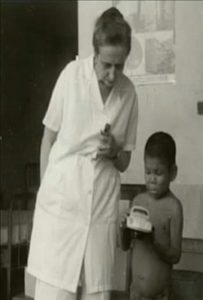 And thus there she was, Germana, re-writing the life of that ‘Giant’, as she felt that life to be. Once, twice, thrice, four times and even more. And thus we see her going through and looking again at his ‘writings’ in order to decipher them, to comment on them, to transcribe them into current language that would be comprehensible to the ears of the people of today.
And thus there she was, Germana, re-writing the life of that ‘Giant’, as she felt that life to be. Once, twice, thrice, four times and even more. And thus we see her going through and looking again at his ‘writings’ in order to decipher them, to comment on them, to transcribe them into current language that would be comprehensible to the ears of the people of today.
“He writes like a Zulu”, she said one day while she was doing such work together with Fr. Vezzani and I took her the first typescript when she was at the Istituto Perini di Rho to which she had been admitted. But she was the first to be convinced that under the dross there was ‘pure gold’ to be retrieved.
For her, St. Camillus was a unique and imperative ‘presence’. Above all else he was an exemplary presence, to whom, that is to say, she turned to direct her ideas, her initiatives and her perspectives.
Now I do not go to look for her books and publications. They are endless in number. I only go, using my memory, to look up certain titles of writings that have accompanied my life as a Camillian (like so many confreres of mine) from when I was boy to nowadays: ‘Living Pages of a Living Saint’. ‘Contester, Reformer, Saint’. ‘A Message of Mercy’.
Germana, above all else, realised that she had come across a ‘living’ saint. Living in the most obvious meaning of the term. Living and lively in the sixteenth century. Living and vital today.
CONTINUE HERE



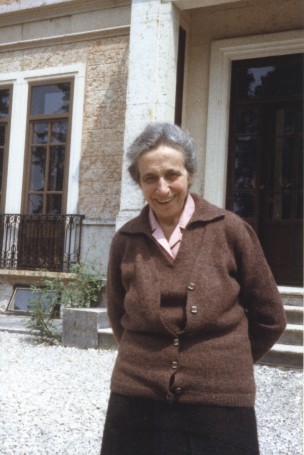






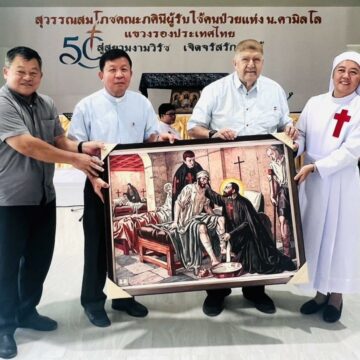
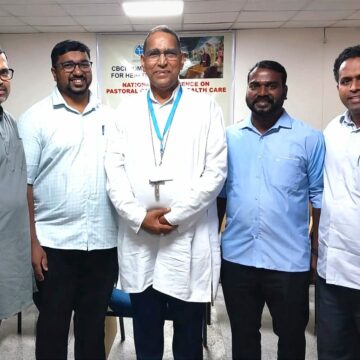


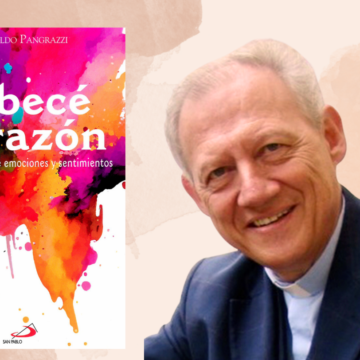
Camillians on Facebook
Camillians on Twitter
Camillians on Instagram